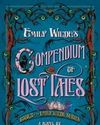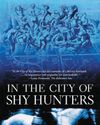
The most important lesson I ever learned as a writer didn't come from a writing book, conference, or a wise mentor. It came from sitting in an airport Arrivals section, studying people.
I was picking my wife up from a girls' trip. A maintenance issue with the jet bridge caused a long delay in her getting off the plane. I shifted in an uncomfortable plastic chair, watching weary travelers descending an escalator while '80s one-hit wonders played from speakers overhead.
Whenever someone rode down the escalator, my heart leaped, hoping it was my wife. But each time, it was a stranger looking nervously down at the crowd, scanning for their loved ones.
I decided to play a game. As each person reached the bottom of the escalator and reunited with their loved ones, I asked myself, "What's that person's story?"
The experience forever changed how I think about writing characters.
As writers, we often seek external advice, but we sometimes forget that the best teacher is the experience of being human and using our five senses.
In this article, we'll cover how to master the art of people-watching. You'll learn how to uncover details about people that you can easily translate into fiction.
Remember the lessons in this article through a simple phrase and acronym: "Put every person you see through their PACES." PACES stands for:
Physical characteristics
Attitude
Cues (nonverbal)
Emotional vulnerabilities
Setting
P Is for Physical Characteristics
Physical characteristics include but are not limited to:
• Clothing
• Hair
• Eyes
• Facial features
• Mannerisms
Every physical characteristic is a clue to that person's personality. To illustrate this, I'll present a case study of two contrasting women who came down the escalator, one after the other.
この記事は Writer’s Digest の July - August 2024 版に掲載されています。
7 日間の Magzter GOLD 無料トライアルを開始して、何千もの厳選されたプレミアム ストーリー、9,000 以上の雑誌や新聞にアクセスしてください。
すでに購読者です ? サインイン
この記事は Writer’s Digest の July - August 2024 版に掲載されています。
7 日間の Magzter GOLD 無料トライアルを開始して、何千もの厳選されたプレミアム ストーリー、9,000 以上の雑誌や新聞にアクセスしてください。
すでに購読者です? サインイン

Avoiding the Dreaded Info Dump
Pouring too many details into a few pages is both the sign of an immature writer and an unfocused story.

FINDING LIGHT IN THE DARKNESS
How comic Gary Gulman effectively blends humor into his story of overcoming major depression.

Stephen Graham Jones
They say you should never meet your heroes. But speaking with Stephen Graham Jones is a lot like speaking with your local theater nerd about the history of Broadway, except with a lot more goosebumps and nightmares.

Failure Is the Foundation
I can recall exactly where I was when I came up with the idea for my adult fantasy series, Emily Wilde.

Fiction Is the Lie That Tells the Truth Truer
On the Legacy of Tom Spanbauer

What Is Your Story Question?
Revision and editing advice to take your first draft to the next level.

Writing for the People We Hope to Become
Elisa Stone Leahy's new middle-grade novel, Mallory in Full Color, tackles the in-between moments of adolescence, when who we are and who we want to become collide.

Creating Community
Whether hot off the presses or on the shelves for years, a good book is worth talking about.

Pat Barker
The Booker Prize-winning author of Regeneration shares the role characters play in developing novel ideas and explains what appeals to her about reimagining mythology.

How to Write in Different Genres
Emiko Jean and Yulin Kuang share tips and strategies for how they successfully write in different genres and mediums.